Situation Analysis
Zanskar is one of the coldest arid inhabited highlands in the world, situated within an altitudinal range of 3,500 m to 6,478 m above mean sea level. The area is the remotest and one of least accessible parts of Kashmir region with the temperature range from -30°C to 28°C.

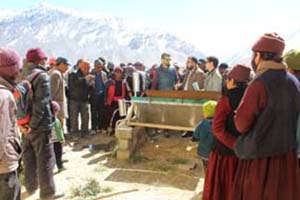
Due to the harsh winters, the animal dung seems to be one of the sources of energy in the rural houses to cook foods, boil water and heat up the space to live with ease. This leads the women to wander places for collecting the dung from grazing land and livestock sheds and storing the dung cakes to be used during the winter seasons. During the winter season from December to February, when the temperature rapidly dips down to freeze at about -30oC leading the LPG and electricity to be useless, the dung cakes play a pivotal role in providing the inhabitants a relief from the chilling winter waves.
Plan, Implementation and Testing
Sunshine in this region is quite intense and clear for around 300 days and can be one of the major source of energy to meet domestic needs of the community. Though the Government has installed solar stations to provide electricity in villages but this supply is mainly for lighting purposes. Other needs of cooking, space and water heating are met solely through animal dung.
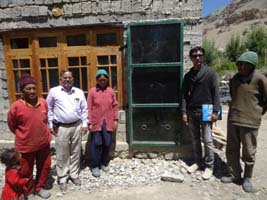
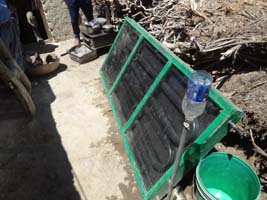
Solar water heating systems of evacuation tube model have been installed by affluent families but are not successful as tube cracking in winter is quite common and difficult to repair. Burning of dung in households produce lot of smoke and leakage in living space affect human health in long run. Further, burning of dung deprive agriculture land of manure thus depleting soil fertility.
With the help of backstopping of SKUSAT, Kashmir, the KVK, Zanskar made efforts for designing the innovative panels from locally available material for water and space heating that are suitable for tribal community of Zanskar Valley of Ladakh region. These solar panels are then fabricated on wood frame available in local households.
The other material used in this is galvanized iron (GI) sheet as absorber and Galvanized Iron (GI) Pipe/ Aluminum alloy coil (3.75-4.0 cm internal diameter) with inlet and outlet connection for water on two ends. The absorber GI sheet is fixed in the centre of wood frame.
Backside of the absorber sheet is insulated with thermocol sheet (3.75 cm) glued with bitumen and covered on outer side with thin aluminum sheet for protection. On the front illuminated side of the absorber sheet is fixed with GI or aluminum water coil with reducers (2.5 cm) to outlet and inlet of water protruding through the wood frame for cold water and hot water connections. Absorber sheet and aluminum water coil is coated with black paint having fine carbon powder produced locally from specific wood which increased efficiency of solar energy absorption. At the top of coil panel it is covered with two layers of window glass (4mm) having 1.25 cm distance to hold air for insulation. Panel is installed at 45o angel on the roof top facing south to capture maximum sunlight.
Panel coil hold 18.0 liters of water and is heated to 70-80oC within 30-45 minute of solar illumination. Household member can draw 100-120 liters of hot water in clear sunny day for household purpose without burning fire place for water heating. These conditions promote efficiency of this system to maximum and replacement of GI pipe coil design with aluminum tube coil improves quality of hot water and is of potable quality and can also be used for cooking. Specially designed cold water inlet with antifreeze and silt drainage outlet was fitted for better efficiency with manual filling during winter when water supply from pipes is not available.
Solar space heating panel is same as that of solar water heating panel without water coil. The panel is fixed on south facing wall of the living room with air went at the lower and upper end. When black absorber sheet of the panel is heated with sun through glazing air between glazing and absorber sheet is heated and moves up and enter through upper went in living space. Vacuum is created between glazing and absorber space and cold air enter here from room. This way air siphon is created and the room air is heated to a comfortable level without any active use of energy. Therefore this panel is also known Thermosyphoning Air Heating Panel (TAP). Testing of this technology revealed that low cost solar panels heated 120 liters of cold water (110C) into boiled water (840C) in 35 minutes. Availability of hot water and heated space will reduce indoor pollution and hygiene of tribal people through regular bathing and washing of cloths. This will also save precious time of tribal women in collecting dung from field.
Being made from locally available material, these innovative solar panels are cost-effective. Along with this, the panels require least post-installation maintenance and are easy to be fabricated by artisan (carpenter). In this direction, the KVK also trained the local artisans for fabrication and installation in villages.
Impact
Upon finding the positive results of the technology, the Krishi Vigyan Kendra, Zanskar successfully piloted the project at some places in the valley and found the technology rearing good results. In the due course, the technology has been successfully adopted by the tribal people. The favorable response from the tribal community in the area, led to installation of these innovative low cost solar heaters at around 158 houses with the help of funds received from Science for Equity Empowerment and Development Division (SEED), Department of Science and Technology (DST), Government of India.
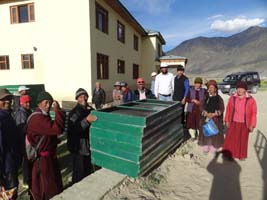
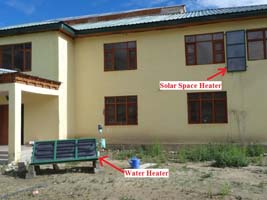
The benefits and practical utility of the technology also led the Ladakh Development Council (LDC) of District Kargil to adopt and replicate the technology on a large scale. As a result, now, the KVK, Zanskar is all set to demonstrate the design and development of this solar water and space heating technology not only in the other parts of Zanskar valley, but other parts of Alpine region Kashmir too.
(Source: ICAR-Agricultural Technology Application Research Institute, Ludhiana)








Like on Facebook
Subscribe on Youtube
Follow on X X
Like on instagram